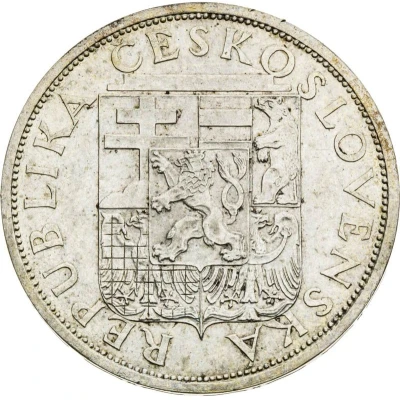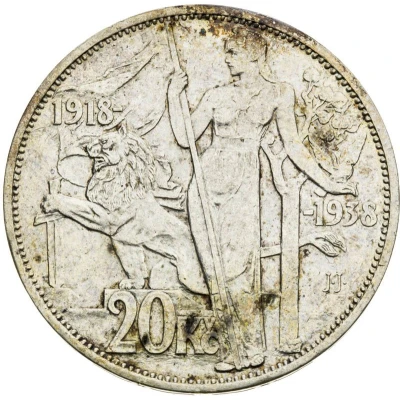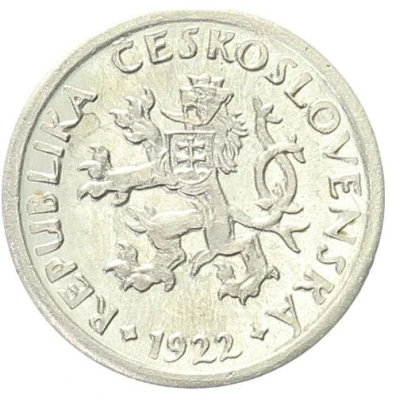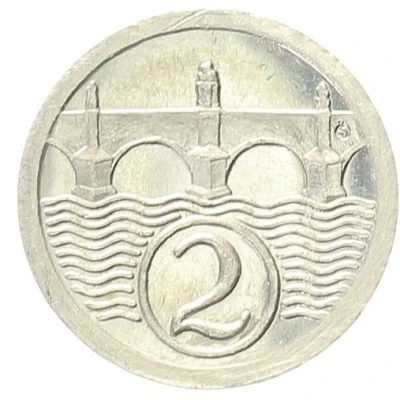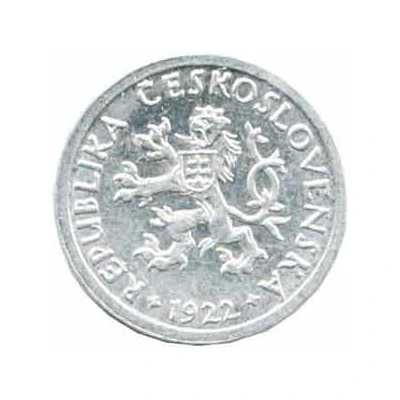
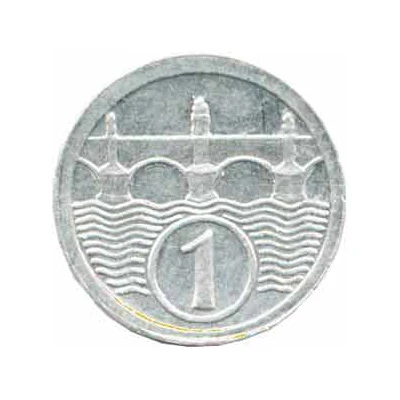

© AUREA Numismatika
1 Haléř Trial Strike
1922 (1945) year| Aluminium | 0.49 g | 16 mm |
| Issuer | Czechoslovakia |
|---|---|
| Period | People's Republic (1948-1960) |
| Type | Pattern |
| Year | 1922 (1945) |
| Value | 1 Haléř (0.01) |
| Currency | Koruna (1945-1953) |
| Composition | Aluminium |
| Weight | 0.49 g |
| Diameter | 16 mm |
| Shape | Round |
| Technique | Milled |
| Demonetized | Yes |
| Updated | 2024-10-04 |
| Numista | N#90336 |
|---|---|
| Rarity index | 95% |
Reverse
Charles bridge in Prague, value below
Script: Latin
Lettering: 1
Engraver: Otakar Španiel
Comment
As pre-war coinage circulated in after war years, new trials were struck in search for new coinage measurements. As old dies were used, those trials appear with frozen dates.According to Jozef Petrovič - Niektoré menej známe pokusné razby československých mincí this coin was produced in 1953 as material and weight trial for 1 heller.
Interesting fact
One interesting fact about the Pattern 1 Haléř (Trial Strike) 1922 (1945) from Czechoslovakia made of Aluminium weighing 0.49 g is that it was minted during the World War II era, specifically in 1945, but it bears the date 1922. This is likely due to the fact that the Czechoslovakian government in exile, which was established in 1940, wanted to create a new currency that would be used after the war. The coin was minted in aluminum, which was a common material used for coins during that time, and it features a unique design that is different from other coins minted during the same period. This coin is considered a rare and valuable collector's item, and it is a fascinating piece of history that highlights the complexities of currency production during times of war and political upheaval.
